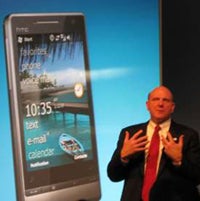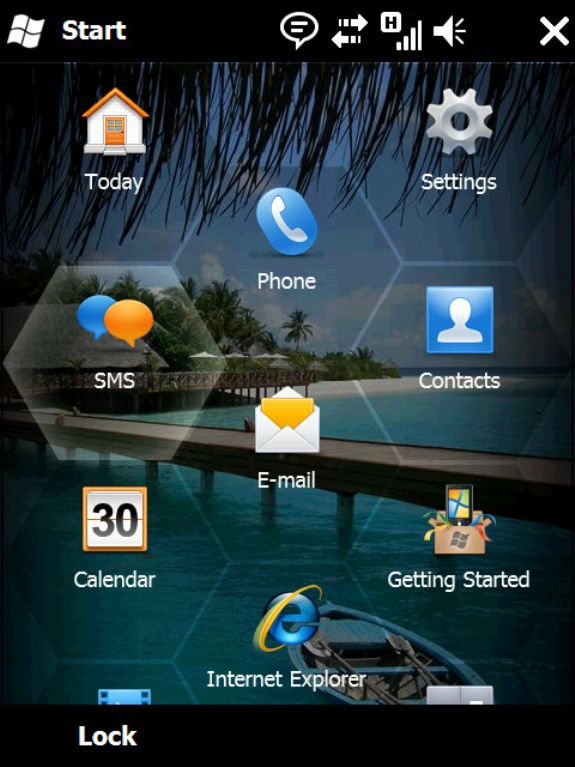 In the American Recovery and Reinvestment Act of 2009, recently enacted by Congress, many details regarding the allocation of funds for high-tech projects remain blurry. Nevertheless, the nation's tech community appears to be encouraged by the $7.2 billion provision for broadband in the near $789 billion economic stimulus package signed into law by President Barack Obama earlier this week. Many observers believe that the allocation is a clear first step toward establishing a nationwide broadband strategy.
In the American Recovery and Reinvestment Act of 2009, recently enacted by Congress, many details regarding the allocation of funds for high-tech projects remain blurry. Nevertheless, the nation's tech community appears to be encouraged by the $7.2 billion provision for broadband in the near $789 billion economic stimulus package signed into law by President Barack Obama earlier this week. Many observers believe that the allocation is a clear first step toward establishing a nationwide broadband strategy.
Officially known as "Title VI--Broadband Technology Opportunities Program," the $7.2 billion in broadband stimulus money accounts for less than 1 percent (and only five pages) of the entire package. Its purpose is to spur broadband growth in underserved areas of the country.
What the Law Says
The bureaucracy to allocate the money has not been set up yet, and no one can be absolutely sure exactly how the broadband program will work. Still some definite elements have emerged.
First, two entities will issue grants under Title VI: the National Telecommunications & Information Administration (NTIA), and the United States Department of Agriculture (USDA) Rural Utilities Service. Tech companies, telecommunications service providers, and other ISPs large and small will compete for the grant money through a bidding process managed by the two organizations.
But confusion exists even on this point. "There's no clear way to know which government entity they should apply to," says Derek Turner, research director of Free Press, a Washington media-reform think tank.
Urban vs. Rural Broadband
The debate has begun in earnest over how much of the money should go to developing and extending rural broadband service and how much to improving quality and choice in existing urban broadband service. The division of the $7.2 billion between the two agencies provides some clue: The NTIA will be responsible for about $4.7 billion of the money, while USDA will dispense about $2.5 billion of it.
Language in the new law explicitly mentions expanding broadband to rural areas: "The purposes of the program are to (1) provide access to broadband service to consumers residing in underserved areas of the United States; (2) provide improved access to broadband service to consumers residing in underserved areas of the United States."
The law does not define any of those terms, however, nor does it identify the mechanism for issuing funds. Rather, it simply states that "the grant program [will be created] as expeditiously as practicable" and that "if approved, provide the greatest broadband speed possible to the greatest population of users in the area."
The USDA has been operating a Rural Utilities Service since 2002 to help small towns obtain broadband access; but the program, operating with a much smaller budget than the one it will administer under the stimulus act, has achieved only limited success.
We also know something about the timing of the allocations. The new bill states that "all awards are [to be] made before the end of fiscal year 2010."
Many Unknowns in Allocation Plan
While the Obama Administration would like to dole out this money as quickly as possible, many industry experts say that several months--and perhaps a year or more--will pass before any tangible services are up and running. Furthermore, many of the program's details have yet to be determined.
According to Bart Forbes, spokesperson for the National Telecommunications & Information Administration (NTIA), the White House's technology policy arm, and one of main distributors of the new infusion of broadband money, no bureaucratic process is in place yet to move the funds to their needed destinations. "There's no procedure; there's no staff; there's no program," Forbes says. "The key players have not been put into place."
Forbes adds that the NTIA has no permanent head at the moment--and hasn't had one since November 2007. Moreover, the Department of Commerce, of which the NTIA is a component agency, has no secretary either.
Despite these ambiguities, many industry analysts seem hopeful about the broadband initiative's prospects for success. "There's lots of potential for waste, fraud, and abuse [in the new law], but our country is in trouble right now," Turner says. "I'm cautiously optimistic."
 Don't call them Windows Mobile phones anymore. In announcing the latest revision of Microsoft's OS for handsets at Mobile World Congress today, MIcrosoft CEO Steve Ballmer said that henceforth, the devices will be known as Windows phones.
Don't call them Windows Mobile phones anymore. In announcing the latest revision of Microsoft's OS for handsets at Mobile World Congress today, MIcrosoft CEO Steve Ballmer said that henceforth, the devices will be known as Windows phones. Windows Mobile 6.5, which in addition to the new user interface sports an improved, more desktop-like browser, will make its debut later this year on handsets also announced on Monday, including the HTC Touch Diamond2 and the LG-GM730.
Windows Mobile 6.5, which in addition to the new user interface sports an improved, more desktop-like browser, will make its debut later this year on handsets also announced on Monday, including the HTC Touch Diamond2 and the LG-GM730.



